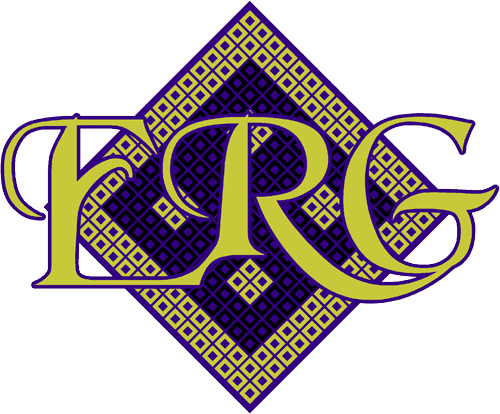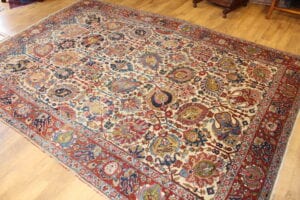This specific Bakhtiari rug, adorned with its captivating animal motif, certainly merits an entire page dedicated solely to its exquisite artistry and uniqueness. I must admit, as an individual who appreciates fine rugs, I had never before encountered a Bakhtiari rug quite like this one. Its distinctive animal-inspired design sets it apart in a realm of its own, making it truly a remarkable and unparalleled masterpiece within the realm of Bakhtiari rugs.
The motif involves a combination of sea creatures, land animals, and mythical creatures like dragons. A motif is a recurring theme or element in a work of art, literature, or design. This particular motif could be used in various forms of creative expression such as visual art, literature, or even in decorative elements.
The use of sea creatures, land animals, and mythical creatures like dragons could convey a sense of diversity and juxtaposition between different worlds or realms. It might symbolize the interconnectedness of nature, both real and imagined, and could carry themes of balance, harmony, or even conflict between these different elements.
The role of DRAGONS in Persian Culture:
Dragons have a significant cultural and symbolic importance in various cultures, including Persian culture. In Persian culture, dragons have been depicted in art, literature, and mythology for centuries. They often hold complex meanings and represent different concepts depending on the context. While I can't access external sources directly, I can certainly provide you with some information based on my training data up until September 2021.
Dragons in Persian culture are often associated with power, strength, and protection. They are seen as majestic and mythical creatures that have the ability to guard and protect valuable possessions, such as in the case of the Bakhtiari rug you mentioned. In this context, the dragons could symbolize the idea of protection and guardianship, enhancing the significance of the rug as a cherished and valuable item.
In Persian mythology, dragons are sometimes linked to cosmic forces and are considered to be intermediary beings between the material and spiritual worlds. They are often portrayed as serpentine creatures with multiple heads, each head representing a different aspect or power. These depictions highlight the dragons' role as powerful and otherworldly beings.
You might also find references to dragons in Persian epic literature, such as the "Shahnameh" (Book of Kings) by Ferdowsi. In this epic, dragons appear as legendary creatures engaged in battles with heroic figures. These stories further contribute to the dragons' association with bravery and the struggle between good and evil.
While dragons have historically held a prominent place in Persian culture, their symbolism and significance may vary based on different artistic and historical contexts. If you're looking for specific literature or scholarly sources, I recommend searching academic databases, libraries, or art history books that delve into the symbolism of dragons in Persian culture.

